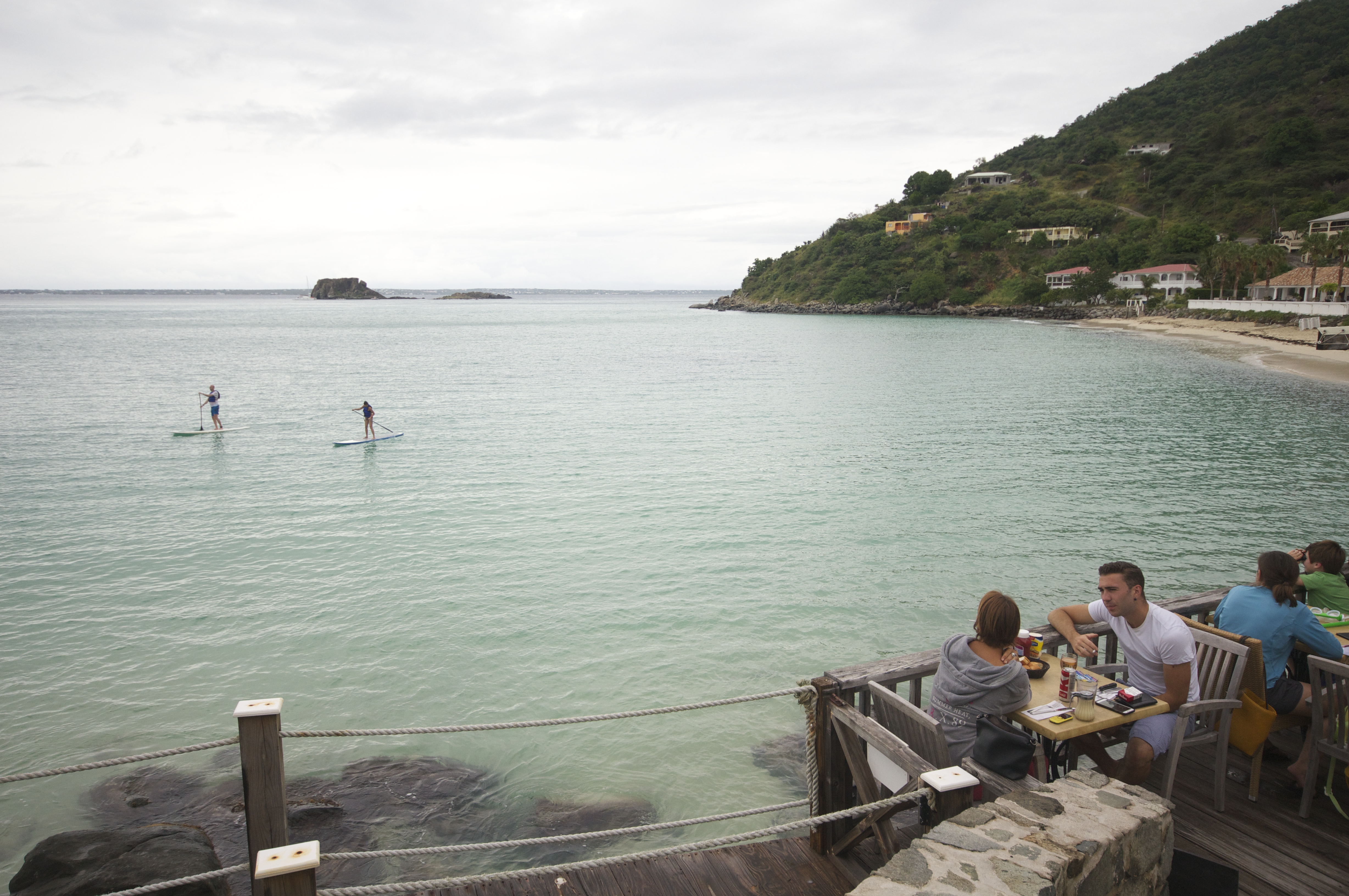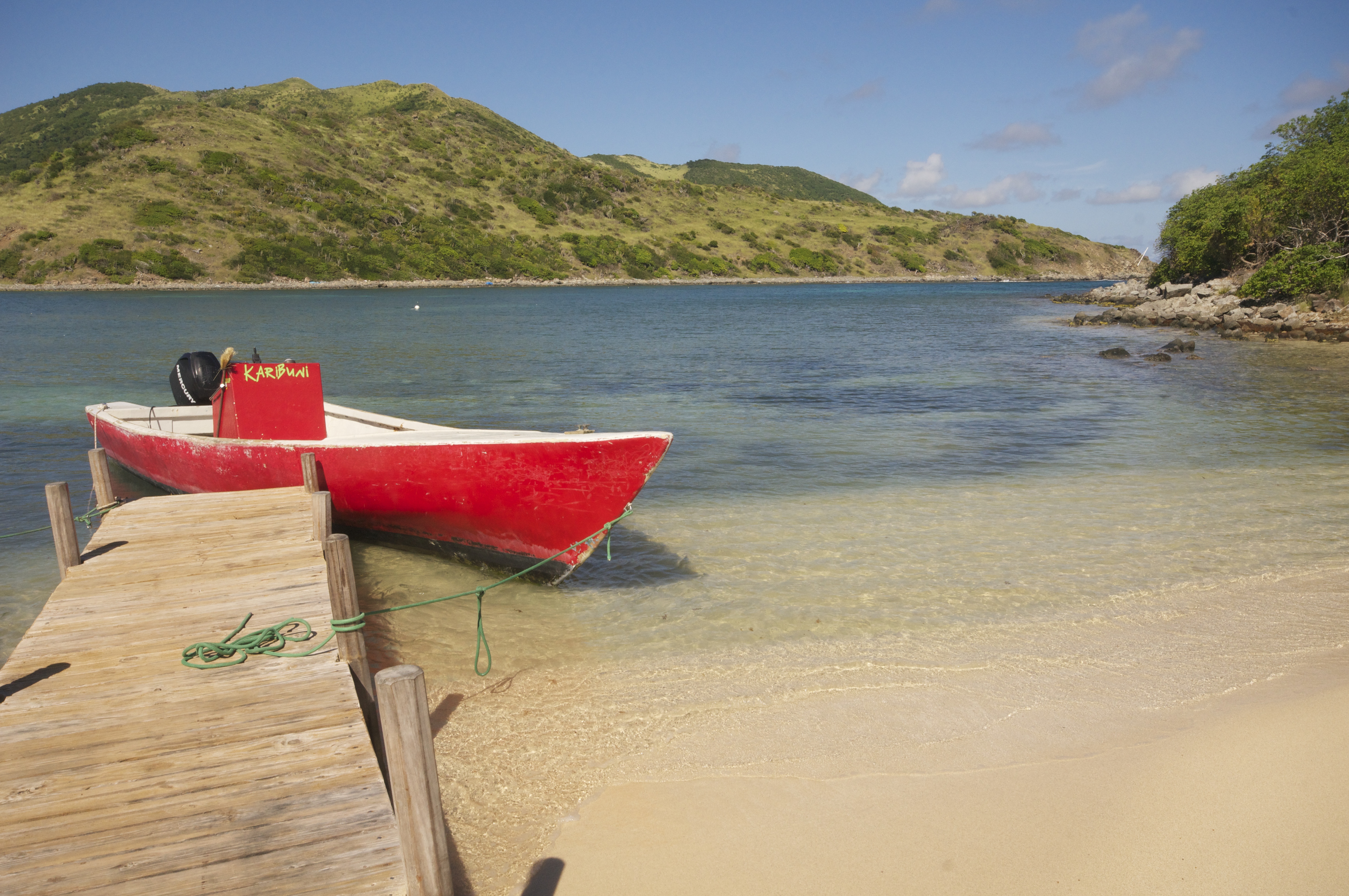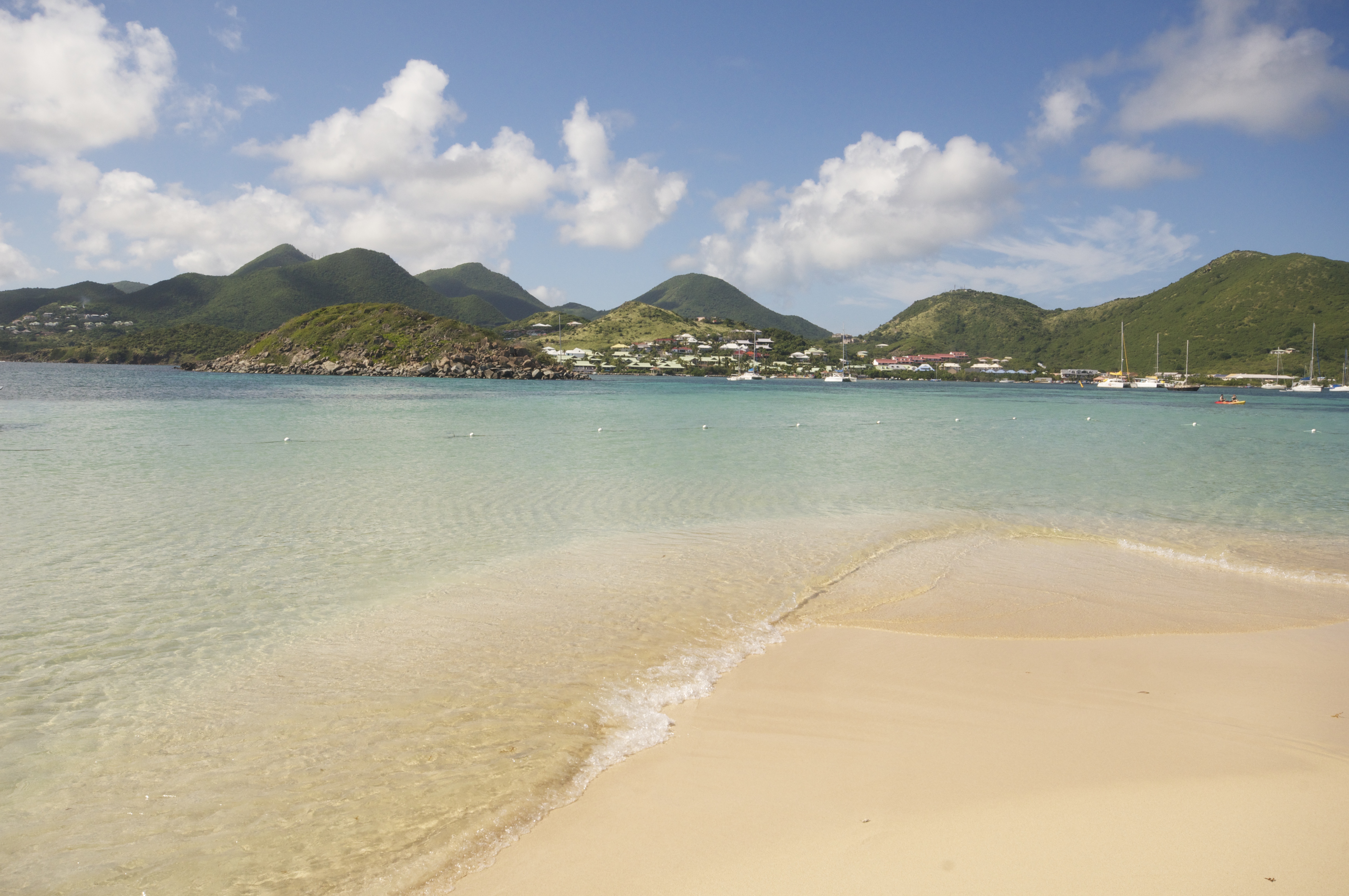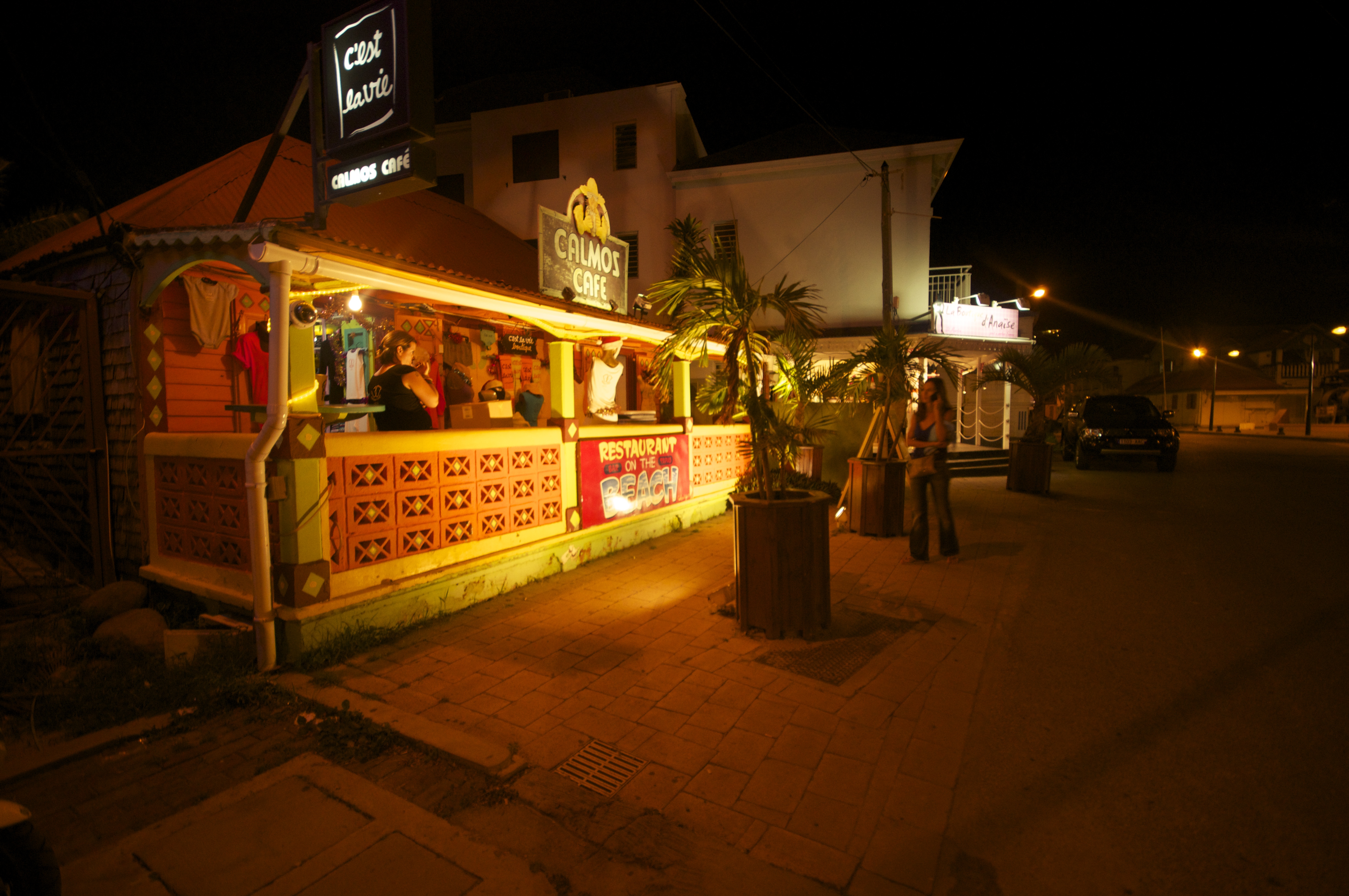Special to the Washington Post
Oct. 15, 2015
“I am never going on vacation with you guys again,” my sister Rachel says.
A curious sentiment, given the setting: We are at a beachfront restaurant on the island of St. Martin, 11:30 a.m. on a mid-December Monday, sharing a mojito while awaiting plates of sauteed grouper. My wife, Cathleen, and children, Kai (6) and Christina (3), are with us. Twenty feet away the Caribbean Sea laps at buttery sands.
Rachel joined our family vacation in large part to help with the kids and allow Cathleen and me glimpses of what vacationing was before we had children. Lost in this arrangement was how hard it would be for us — or, more precisely, me — to actually let that happen. Tangled in the bramble of parenting, I struggle to shake free and appreciate what started it all: the marriage.
Thus on Day Two of a week-long trip three adults are tripping over each other, issuing conflicting edicts to the children and sniping comments to each other as we drift ever further from relaxation. Rachel gives the kids bread — before real food arrives! The horror! — and I glare at her. She reprimands them for running around the outdoor restaurant; I declare their behavior fine, drawing a glower from my spouse. The children, ever aware, play the infighting to their advantage.
I have faith this will pass, and it starts to the minute I repair to a cushioned chaise adjacent our table, close my eyes and shut my mouth. Everything calms down once I’m gone from the table. The restorative sound of water on sand mingles with the women’s conversation and our waiter’s voice as he delivers another mojito.
St. Martin, tucked into the northern reaches of the Lesser Antilles, is a 34-square-mile gem of sculpted bays, lush mountains and remarkably good restaurants. This is most true on the northern tier of the island, an overseas territory of France that burnishes the culinary ethos of its maternal government.
 The southern portion is run by the Dutch, under a bifurcation that dates to 1648: Christopher Columbus had named the island after he passed (but didn’t land on) it on the Feast of St. Martin, Nov. 11, 1493. The Dutch had long coveted the island as a way station between colonial holdings in Brazil and what is now New York, and finally harangued Spain’s on-site governor into relinquishing control in 1647. A French naval contingent happened to be milling around offshore and inserted itself, with the threat of force, when Holland and Spain worked out the details of their transfer.
The southern portion is run by the Dutch, under a bifurcation that dates to 1648: Christopher Columbus had named the island after he passed (but didn’t land on) it on the Feast of St. Martin, Nov. 11, 1493. The Dutch had long coveted the island as a way station between colonial holdings in Brazil and what is now New York, and finally harangued Spain’s on-site governor into relinquishing control in 1647. A French naval contingent happened to be milling around offshore and inserted itself, with the threat of force, when Holland and Spain worked out the details of their transfer.
We are in France, on Orient Bay Beach, a 1.3-mile crooked smile bookended by small islands and clustered with outdoor restaurants, including the scene of our spat du jour, Aloha Beach Bar. The vibe here is sans souci, or “without care” (we are late arrivals among the pre-noon rum drinkers) but the food and service far exceed the standard for places with “bar” in their names.
“I’m lucky,” Aloha owner Nathalie Pley, a transplanted Parisian, tells me. “I have a chef from France. Really, this is a party island but there’s so many of us here,” she says, nodding toward the line of restaurants fronting the sea, “that we must serve good food.”
Actually, not true: As one of the island’s longer contiguous beaches, Orient Bay draws a steady flow of tourists, many bused over from the cruise dock in the Dutch-side capital, Philipsburg. They pour forth, pan phones through the air to capture the memory, eat, drink (and drink!), maybe take a swim, and retreat. They would, I suspect, be perfectly content with greasy burgers and fries.
The droves are lighter in Orient Bay this week due to an inundation of a seaweed called sargassum that is amassing on the island’s east-facing beaches. It streams in and piles up with alarming speed, to the point where resorts and public officials deploy tractors at night to churn the plant into the sand. Unlike many other marine flora, sargassum grows in open water. It concentrates in the Sargasso Sea, a massive gyre in the Atlantic Ocean, and a range of factors can shift currents and send the weed to distant shores.
It is marring, though not ruining, the swimming at our home beach, but no matter: An entire island awaits, and with it a suite of tropical backdrops for family dynamics.
Amazing trail
“Of course they need life jackets,” Cathleen sighs. “Don’t be ridiculous.” It is Day Three, and she’s admonishing me as I situate our nearly naked kids in a kayak for a 10-minute paddle over to one of St. Martin’s more popular day trips, Pinel Island. I start to explain that I’ve run the child-overboard-heroic-rescue-by-dad scenario in my head, and that all will be well. But this one isn’t winnable. I stuff K and C into their flotation vests.
Pinel is a protected marine reserve, fringed by reef and a stunning beach that rises to rolling grassy hills. You could swim to Pinel from the shore in Cul de Sac, the bay north of Orient, and in fact we watch a French girl do just that, with some competitive zeal, while her dad pilots a kayak in her wake. Also, a ferry makes the run for $13 round trip. The kayak and stand-up paddle rental shack is adjacent the ferry dock.
Gliding onto the sand we are greeted by orderly lines of umbrellas and chaises (available for rent), and two alluring thatch restaurants. Employees of one are shoveling sargassum into wheelbarrows and shuttling it away, but the seaweed seems to have sullied only one corner of the beach.
The water here is sparkling clear, with an ample, sand-bottomed area roped off for swimming. The bay beyond is dotted with sailboats at anchor. The entire scene is undeniably beautiful but my lens is clouded by Restless Male Syndrome: Is there anything to actually do here?
Cathleen clearly thinks so, as she pays for a chair, kicks up her feet and opens a novel. I scan around for a surf break or kiteboard center that I might have missed, but there are none.
Rachel returns from an exploratory walk. “You guys! I found an a-maz-ing trail through the trees that leads to special place!” Trail? Trees? I see a clump of bushes between the restaurants, but as I start to roll my eyes. the kids light up — “Auntie Rae! Where?” — and bound from the water to follow her.
About Rachel: 47, the middle of my three sisters, goes by Rae, university professor specializing in theater for the young, career artist with boundless creativity and enthusiasm for the wee people, making her a favorite auntie to my kids. And at 5 feet tall, she can, say, find a “trail” through a stout cluster of sea grape trees. I follow along, ducking my 5-7 frame to avoid head injury.
Rae leads us to a sunbaked clearing between the restaurants where a crowd has gathered to gawk at a herd of iguanas. The lizards saunter off the hillside to gobble produce rinds and other scraps tossed by restaurant workers. Every kid there is in heaven. When Kai follows the others in reaching out to pet a reptile, I withhold my standard spiel of how “we don’t interfere with nature” and let him enjoy it.
Looking around, I see a cook pulling lobsters from a trap tied to a dock while, nearby, pods of young partiers stand — in waist-deep water — around wait-served tables adorned with beer, champagne and rum.
Nobody needs me here, so I return to my kayak and stroke through a narrow channel to Pinel’s exposed windward shores.
It isn’t far, 10 minutes into a headwind, but the passage opens to a bygone Caribbean: brilliant fish dart around the reef, visible below; around one corner a picture-book beach, no humans in sight; and to the east, wide-open sea, shades of blue darkening from the turquoise shallows to the white-capped sapphire of deeper waters. I squint to the horizon in hopes of sighting a humpback whale getting a jump on the January-to-May mating season, but I see none.
Before we leave Pinel I find one more thing to do: I hoist Kai onto my back and follow an actual trail up the hillside to the high point of the island. It looks vaguely like Ireland, undulating greens rolling to the sea, webbed by thin footpaths, the only other sign of humanity a Hobie Cat, skittering over the reef.

The author’s wife, left, and sister kayak shallow waters near Little Key, off St. Martin’s east coast. Numerous semi-protected bays and coves make St. Martin an excellent island for kayaking and stand-up paddling. (John Briley)
Orient Bay Village has almost everything a St. Martin vacationer might need: food, sundries and liquor stores, an ocean-view outdoor coffee and juice bar, multiple bakeries and even a respectable hair salon. The village also harbors numerous hotels, cheerily painted townhomes and a pebble courtyard ringed by seductive restaurants, sirens to the budget-unconscious traveler.
I’ve not been to the continental French seaside but I imagine it harbors a village like this: every morsel of food a point of artistic pride, from the first mouth-melting croissant of the day to the final dollop of sorbet; beachgoers who consider the sun worthy of worship, not a demon to be repelled with SPF; locals who speak no English, smoke cigarettes and walk very small dogs.
One night we stroll three minutes from our place to the pièce de résistance of the town square, La Table d’Antoine. We secure a spot outdoors, framed by tropical foliage. A couple of kids are running about, and Kai and Christina waste no time glomming onto them.
They disappear around a corner, prompting Cathleen: “I can’t see them. Can you see them? Where did they go?”
Me: “C’mon, they’re playing. Nothing bad can happen here.” And, because this is a recurring squabble for us, I add the icy kicker: “You need to relax.”
Even before I’m done speaking I realize there are softer ways to disagree with one’s spouse. And, as Cathleen arches an eyebrow at me, I further realize I need to take my own advice.
The kids come racing by, gleeful.
Soon our table looks like a “Food & Wine” cover shot — cheeks of monkfish in a curry sauce, herb-dusted snapper, seared scallops, light refracted through glasses of sauvignon blanc — and our tensions drift away on the tropical breeze.
The routine
By midweek we have found a rhythm: Cathleen and I run on the beach every morning while Rachel watches the kids. We return to base camp to find them deep into creative play involving dragons, sand lairs and fierce princesses.
Most days we flee the seaweed by venturing to other beaches, including Petit Plage, where we settle into a two-hour lunch at the Sunset Cafe before Rae and I kayak Kai out to an island of rock to give him his first snorkeling experience. One afternoon we return to Orient Bay with the sun setting and the wind whipping. Without even asking permission I rig up my kitesurf gear and head out, carving the silky waters until sky and sea meld in the dusk.
Twice we cross over to the Dutch side — St. Maarten — and, in case we missed the welcome sign and national flag, we know we’ve crossed the border because hulking blond Caucasians have replaced sinewy brown-skinned locals as extras in our movie.
What we don’t do is split up: No romantic dinners out or carefree day trips for the married couple. Twice, the five of us head into the food-centric town of Grand Case, forgoing the French restaurants for aged-rum drinks and Creole cooking, and both nights end with me carrying a sleeping child back to the car. On the nights we stay in we cobble dinners together featuring exotic French cheeses and chill out on our second-story balcony while losing brazenly rigged dance contests to Kai and Christina.
No doubt my wife and I would enjoy an uninterrupted dinner together, but one of the great triumphs of parenting is the realization that this — what we’re doing — is enviable, in the grand scheme. Life is short and vacations even shorter, and you might as well spend the special moments with the people you love. Because, you know, they might not ever come on a vacation with you again.



Comments